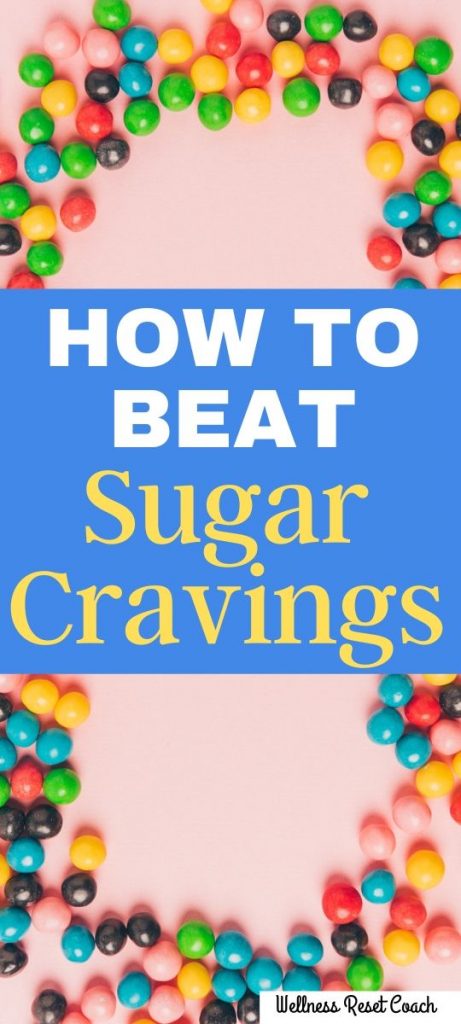

Hands up if you’ve tried pretty much everything to stop cravings and had no luck whatsoever?
I even have to admit, I’ve had moments where I get this intense craving for one of those big cookie cakes with frosting on top from the grocery store.
And you know what? It’s totally OK to have cravings like that!
You are welcome to give into those cravings as well.
The key is learning how to manage it, so you can lose weight and stop feeling so consumed by thoughts of food.
The Problem With Craving Processed Foods
According to research, consuming high amounts of processed foods increases your hunger hormones.
This makes it harder for your body to recognize when you’re genuinely full.
Unsurprisingly, you eat a lot more calories than you would otherwise … usually involving unhealthy foods.
When your body is so used to eating highly processed foods, you begin to crave them often and keep looking for your next fix.
Another finding from the study involved the speed at which food was being eaten.
The group eating the processed food tended to eat more quickly, leading researchers to question whether this was a big factor in the brain being able to recognize signals that they were full.
With all this said, how do you go from needing to eat every piece of sugar in sight, to telling yourself you don’t need it and go on with your day?
It Starts By Being More Mindful to Stop The Cravings.
With mindful eating, you don’t need to spend tons of time and energy to stop your cravings completely.
Telling yourself that you can’t have a particular food works against you in the long term.
Think of it this way: if I tell you not to think about a pink elephant, guess what immediately pops up in your mind?
No matter how hard you try, it’s hard to shift the mental image of the pink elephant.
Your cravings are similar.
Telling yourself “I won’t have sugar for a whole month” creates deprivation.
Those cravings for sugar gradually grow stronger, and pretty soon it becomes all you think about.
Just like the pink elephant.
It also creates a “now or never” way of thinking when you give into the craving.
Which causes you to eat more than you should, because you tell yourself “this is it. Then I won’t have sugar for the next 3 weeks.”
In reality, it will most likely happen again very soon and you’ll carry on feeling guilty about it.
And so the cycle continues.
How Mindful Eating Stops Cravings
Mindful eating really comes into its own in different areas.
It puts you back in control of your food choices, which often feels impossible when you’re constantly trying to beat your cravings into submission.
You’re not giving into your cravings and letting them take control.
Instead you’re allowing yourself a little bit of what you love and taking the opportunity to relish it.
Your mind knows that there will be other chances to satisfy the craving so the “now or never” mentality isn’t a big issue.
The end result? This will stop cravings and make them more manageable when you do get them.
The Trick is Becoming Mindful With How You Eat
When you take that first bite of something you’ve been craving, resist the urge to dive straight into the next one.
If you could guess, how many times does an average person chew a piece of food before swallowing?
The answer is 3. Just 3 bites!
We’re basically scarfing our food down without taking the time to embrace it.
Almost as if you eat that cookie fast enough, you can convince yourself it never even happened.
Aim for 15 chews for each piece of food on your fork.
Breaking down your food with your teeth before it enters your stomach will help the rest of your body digest it properly.
Put your fork down in between bites, or keep putting your food down if you’re eating with your hands.
The more you can chew each bite before swallowing, the better.
Take Time to Notice the Taste and Texture as You Chew.
This might surprise you, especially if you’re used to eating quickly on autopilot.
If you’re eating junk foods, being more mindful with your eating might flag up how salty, sugary or just plain processed the taste truly is.
And chances are, it’s going to be less appealing once you get clued into this.
Even if this doesn’t happen, you’ll realize that your cravings weren’t quite as strong as you thought and feel satisfied after just a few bites.
It can also lift the lid on why you’re getting cravings in the first place.
Sometimes, you’ll know exactly what’s behind it but it won’t always be this obvious.
Being more mindful with your eating can get to the bottom of what is triggering your cravings and the emotions that may be a factor.
It’s not always easy to get to grips with mindful eating, especially if you’re used to eating quick and not tuning into your body’s hunger signals.
Over time, it gets a lot easier to overcome unhealthy relationships with food, including cravings, overeating and emotional eating.
Identify What You Actually Are Craving
You may crave a pint of ice cream for a few different reasons.
Like if you have a stressful week and need to binge-watch your favorite Netflix show with some ice cream.
That’s an emotional relationship towards food, which means you prefer it as a coping mechanism.
Another option is to call up a close friend and vent about your frustrations.
Going for a long walk or writing in a journal will help you get your thoughts out, too.
If you have random cravings for a specific type of food, it could also mean you are deficient in certain vitamins or minerals.
It’s always good to see your doctor before changing up your diet, so you know what to avoid and what to eat more of.
Another Reason for Cravings is Being So Used to Eating a Certain Way.
Our bodies develop a tolerance for things.
The more often you drink alcohol, the harder it is to get drunk.
If you eat fast food 3 times a week, your body will want it every week to get that fix.
If you were to create a food diary from the last week, what would it look like?
Do you tend to grab convenient food, like from a fast food restaurant or a vending machine?
Does your job prevent you from being able to have a proper breakfast/lunch every day?
Pay attention to these things moving forward.
It could really help you identify what exactly it is you need to work on to get rid of unwanted cravings.
Also, you’ll learn unhealthy habits that you can change to make eating healthier a whole lot easier.
According to the results of a 2014 study, a mindful approach to eating can help to build a healthier relationship with body image and curb “disordered eating” such as binge eating.
And from a cravings perspective, many of the women who took part in the study also reported that they spent less time yearning for high fat and sugary treats.
If you’re struggling with cravings, mindful eating could be the lifestyle change that helps you to get back in control of your eating habits and spend more time enjoying what you eat.




